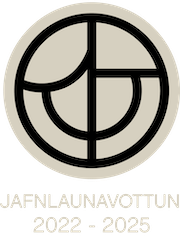Stjórnun þekjuvarna í lungum - verkefni lokið
Fréttatilkynning verkefnisstjóra
Boðleiðir náttúrulegs ónæmis og tjáning gena
fyrir örverudrepandi peptíð voru til rannsóknar í lungnaþekjufrumum. Áhrif
cathelín LL-37 var athugað tengt sérhæfingarferli lungnaþekjufruma. Frumulíkan
fyrir Bordetellu sýkingar var sett upp.
Ekki reyndist unnt að mynda stöðugar afleiður af lungnaþekjufrumunum með CRISPR/CAS9. Greinilega er stýring á ónæmisvörnum þekju fjölþætt, sem hefur mikið aðlögunargildi. Samspil smjörsýru (butyrate) og phenylbutyrate örvunar við vítamín D viðtakann við örvun yfirborðsvarna er líklegast tengd opnun litis frekar en að efnin séu bindlar fyrir viðtakann. Við höfum sýnt að sýklar deyfa þekjuvarnir áður en þeir ráðast til atlögu. Þekjuvarnir byggjast að hluta til á tengslum milli þekjufruma. Í rannsókninni sýndum við að Bordetella bakterían sem veldur kíghósta, rýfur þessi tengi. Rofið er tengt ákveðnu toxíni frá bakteríunni sem kallast CyaA og virkar í gegnum hækkun á cAMP innboðanum. Skilgreindir ferlar í samskiptum sýkla og hýsilfruma eru forsendur til að þróa nýjar meðferðir sem gætu dregið úr notkun fúkkalyfja. Örverudrepandi peptíð á yfirborði þekju má örva til að efla varnir yfirborðs og hindra sýkingar. Þessi nálgun gæti í náinni framtíð dregið úr notkun sýklalyfja og gæti virkað gegn fúkkalyfja ónæmum stofnum sem eru mikil vá. Vísbendingar okkar í verkefninu eru að örverudrepandi peptíðin sjálf virki ekki eingöngu á bakteríur heldur örva þau þekjufrumurnar sem getur haft jákvæð áhrif á græðingu sára þó líklega sé peptíðið LL-37 ekki ráðandi þáttur í örvun lungnaþekju-fruma fyrir lokun sára.
English
Signal pathways in innate immunity and expression of antimicrobial peptides were analyzed in the project. The influence of cathelicidin LL-37 on epithelial differentiation was investigated. An epithelial cell model for Bordetella infections was established. It was not possible to establish stable derivates of the lung epithelial cells using CRISPR/CAS9. It is clear that regulation of epithelial defenses depends on multifarious pathways and this setup has adaptive value. The interplay between butyrate/phenylbutyrate with the vitamin D receptor (VDR) is most likely due to chromatin conformation and opening rather than the inducers functioning as ligands to the VDR. We have shown earlier that pathogens inhibit surface defenses of the epithelium. The surface defenses are partly dependent on the links between adjacent cells called tight junctions. In the project we showed that the Bordetella bacteria the causative agent for whooping cough disrupts the tight junctions between epithelial cells. The disruptions dependent on a toxin from Bordetella called CyaA that works through the cellular second messenger cAMP. Defined pathways important for host pathogen relation are important for developing novel therapies that could reduce the use of antibiotics (host directed therapy). Antimicrobial peptides (AMPs) at epithelial surfaces can be induced to enhance the potency of the surface defenses and thereby inhibit pathogens in infections. This approach might in future reduce the use of antibiotics and in addition it can work against antibiotic resistant strains. These strains are considered a major treat against healthcare and society. Our indications from the project show that antimicrobial peptides are not only limited to eliminate bacteria but also can to stimulate epithelial cells and thereby have positive effect for wound healing. However, the AMP LL-37 would not be a major contributing factor in this important activity.
Heiti
verkefnis: Stjórnun þekjuvarna í lungum/Regulation of epithelial immunity in
the lung
Verkefnisstjóri: Guðmundur Hrafn Guðmundsson, Háskóla Íslands
Tegund styrks: Verkefnisstyrkur
Styrktímabil: 2015-2017
Fjárhæð styrks: 30 millj. kr. alls
Tilvísunarnúmer Rannís: 152370


